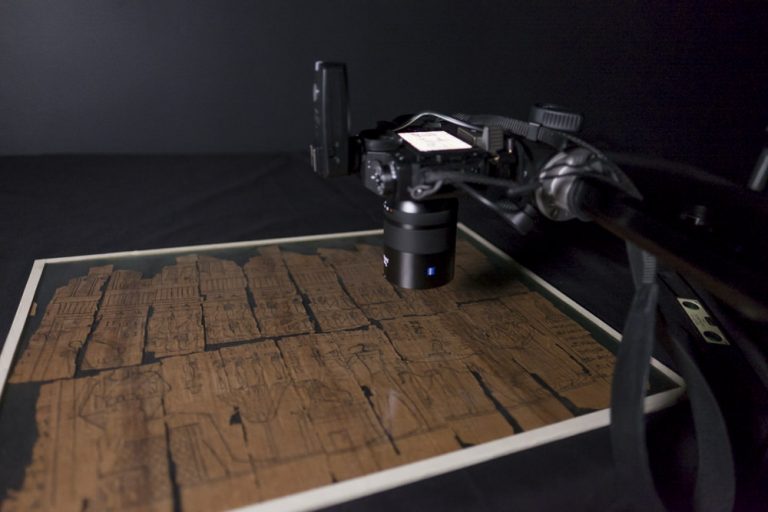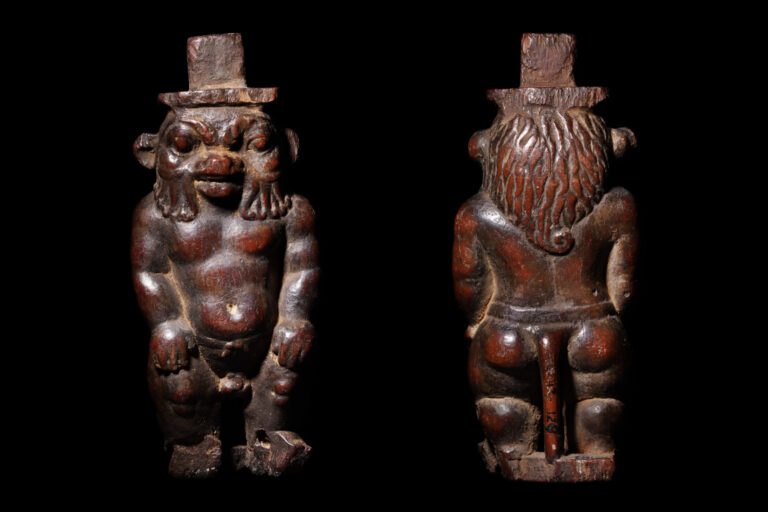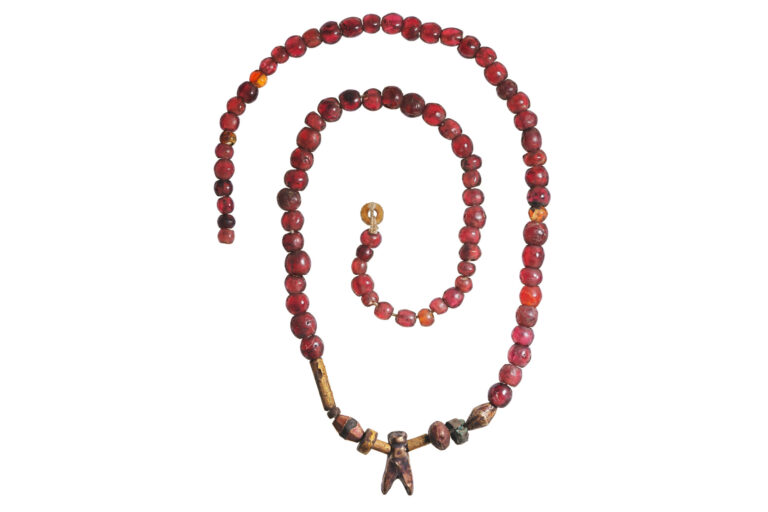At the Garstang: first session photographing the Book of the Dead
Last week, I had my first proper session in the photographic suite. I spent the day in near darkness, photographing a couple of pages from the Book of the Dead.
But why were you in near darkness?, I hear you cry. Because of my arch-nemesis: reflections.
The papyri are encased in sheets of glass, which were cleaned beautifully by some of the museum interns before I photographed them. However, the now extra-clean glass was was extra shiny, and therefore extra reflective. Although the walls and ceiling in the suite are painted black, even low amounts of light were reflecting off the light fittings in the ceiling back down onto the glass.

The best solution I found was to turn my panel light down almost to its dimmest setting – to minimise the amount of light bouncing around in the space – and have a thirty-second exposure on the camera to compensate for the very low light.
Once I got my lighting and camera set-up working, I could get into the swing of things.

Photographing the Book of the Dead
The two pages I photographed were Spells 110 and 125 of the Book of the Dead.
Spell 110 depicts the Field of Reeds, a place in the afterlife based on real life. The illustrations show scenes such as people with oxen, tilling the land and growing crops.
Spell 125 is the famous judgement scene, where the deceased has their heart weighed against the feather of truth to see if they’ve led a good life.
I photographed both pages in full. However, instead of photographing each one in a single shot, I got much closer and photographed them over several shots. I can then stitch them back together in Photoshop, giving me a much bigger, more detailed final image. An initial play in Photoshop has given me files which can be printed out at about a metre in width.
As well as photographing the papyri in their entirety, I was getting shots of individual elements in greater detail. The advantage to working with a macro lens is that I can photograph tiny, tiny areas of the papyri which can then be printed out many times larger.

Here, you can see the hieroglyphs I was photographing on the LCD display on the camera. The actual size of these glyphs is around two or three cms. I will then be able to print them out at least at A3 size.

The day took a little while to get going, having to mess around getting the lighting arrangement set up properly. However, I got some lovely photos, both for the Garstang’s upcoming exhibition and for my own personal project. Here’s a couple of photos of details I got for myself:



Thank you for taking the time to read this article. If you’ve enjoyed it and would like to support me, you can like/comment, share it on your favourite social media channel, or forward it to a friend.
If you’d like to receive future articles directly to your inbox you can sign up using the link below:
If you feel able to support me financially, you can:
- become a patron of my photography by subscribing for £3.50 a month or £35.00 a year
- gift a subscription to a friend or family member
- or you can tip me by buying me a virtual hot chocolate (I’m not a coffee drinker, but load a hot chocolate with cream and marshmallows, and you’ll make me a happy bunny …)
With gratitude and love,
Julia
Unless otherwise credited, all photos in this post are © Julia Thorne. If you’d like to use any of my photos in a lecture, presentation or blog post, please don’t just take them; drop me an email via my contact page. If you share them on social media, please link back to this site or to one of my social media accounts. Thanks!








[…] […]
[…] out to play any more. (Of course, one major advantage of the papyrus not being in glass is that I didn’t have reflections to deal with. This meant a brighter light and a faster shutter speed, making my workflow much […]
[…] numerous hours in the photographic suite, many more vying with Photoshop, followed by several weeks of nail biting, hoping my photos would […]
[…] out to play any more. (Of course, one major advantage of the papyrus not being in glass is that I didn’t have reflections to deal with. This meant a brighter light and a faster shutter speed, making my workflow much […]